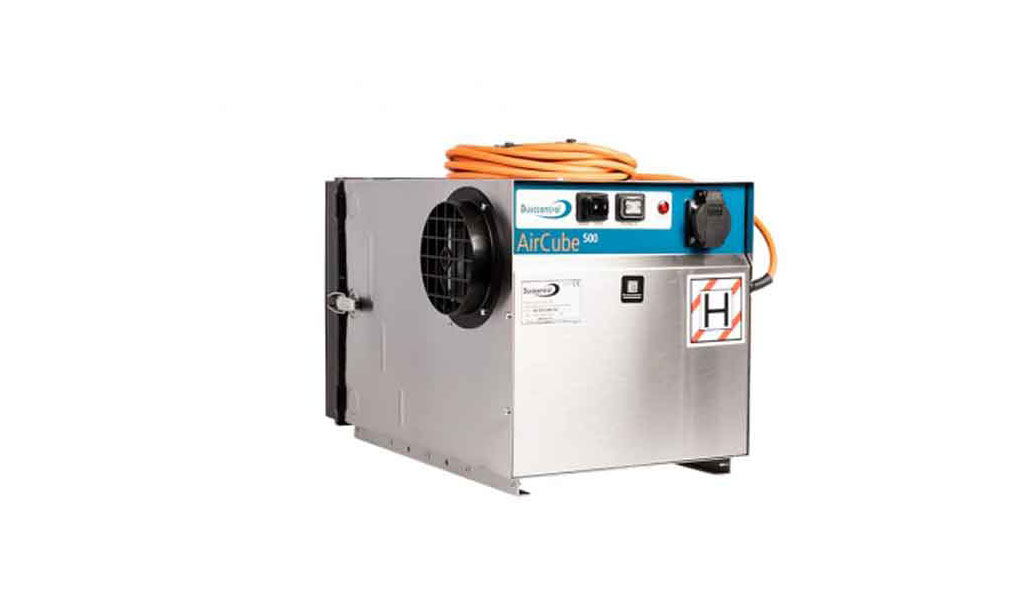The DC AirCube is designed to separate fine and hazardous dust down to 0.3 microns. Silica dust found in concrete, brick, plaster and mortar is an example of such a practicle. The DC Aircube is a great complement to source extraction for tasks such as jackhammering, wall sanding, concrete grinding, demolition work, kitchen and bathroom renovation, and all other construction work. It is also a popular choice in bakeries and carpentry workshops as it cleans the air and filters out hazardous flour or wood dust.
————————————–
Marking Filtering Efficiency
In order to ensure that the dust extractor meets the requirements outlined in the relevant work environment provisions, it is classified in line with a standardised test. In accordance with the EN-60335-2-69 standard for the testing of dust and water extraction units, there are three classifications for dust extractors: L for low, M for medium and H for high. The category required for a specific application is determined on the basis of the maximum allowable concentration (MAC) for that type of dust in the work environment.
In accordance with EN-60335-2-69, the test comprises two phases:
1. Testing of the filter system (fine filter and HEPA filter, where relevant).
2. Testing of the fully assembled dust extractor.
 |
H – High is the class with the most stringent criteria, stipulating a filtration efficiency of 99.995% for particles measuring from 0.1 to 5.0 μm. The machine is capable of maintaining a MAC |
 |
M – Medium has an efficiency of >99%.
|
 |
M – Medium has an efficiency of >99%.
|
 |
The machine is certified by a third party – IFA, in
|
